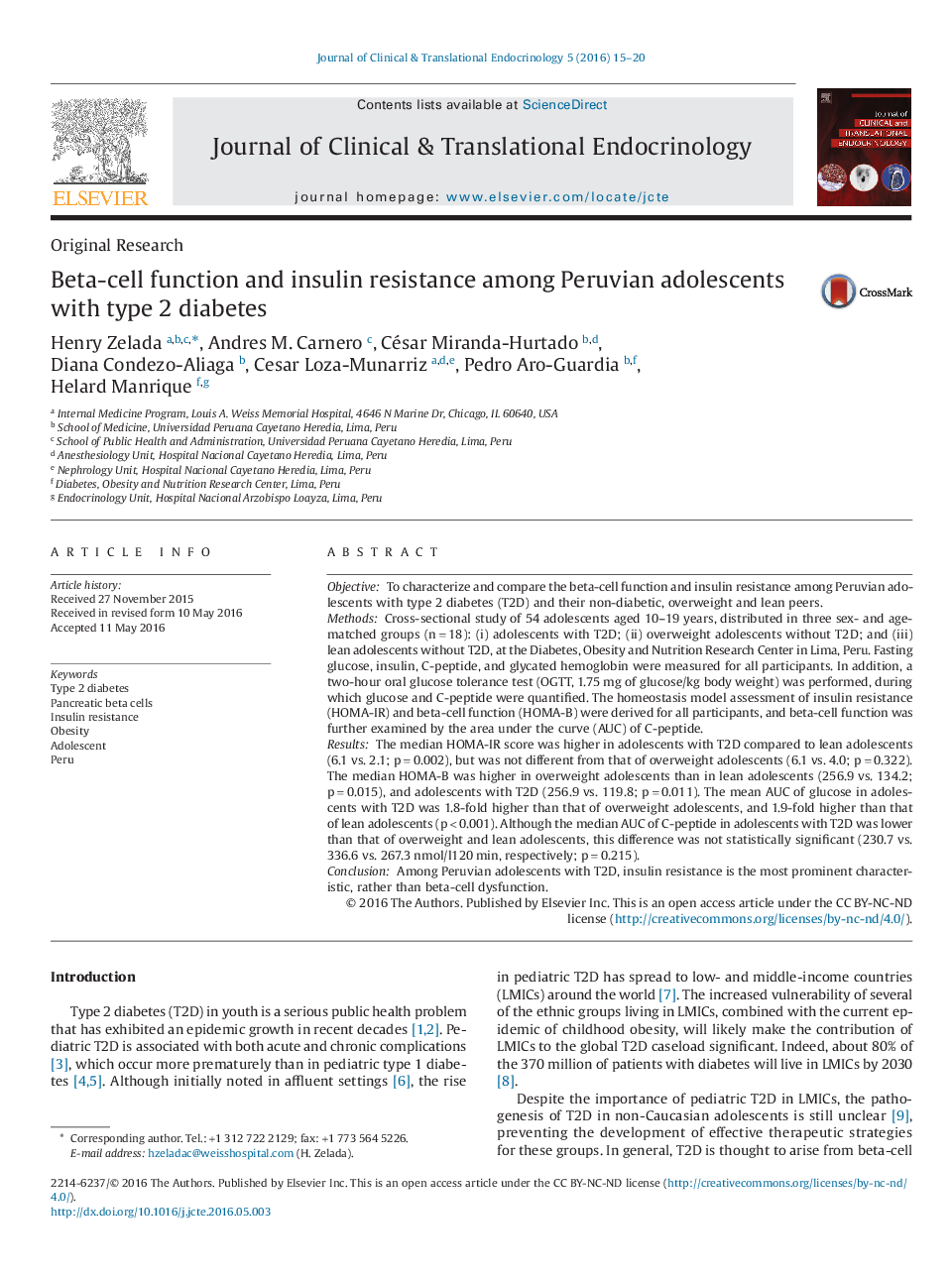| Article ID | Journal | Published Year | Pages | File Type |
|---|---|---|---|---|
| 2803982 | Journal of Clinical & Translational Endocrinology | 2016 | 6 Pages |
•This is the first study in youth Hispanic with T2D born and raised in Latin America.•Insulin resistance is the main pathophysiologic characteristic in this target group.•Therapeutic target should focus on insulin resistance.
ObjectiveTo characterize and compare the beta-cell function and insulin resistance among Peruvian adolescents with type 2 diabetes (T2D) and their non-diabetic, overweight and lean peers.MethodsCross-sectional study of 54 adolescents aged 10–19 years, distributed in three sex- and age-matched groups (n = 18): (i) adolescents with T2D; (ii) overweight adolescents without T2D; and (iii) lean adolescents without T2D, at the Diabetes, Obesity and Nutrition Research Center in Lima, Peru. Fasting glucose, insulin, C-peptide, and glycated hemoglobin were measured for all participants. In addition, a two-hour oral glucose tolerance test (OGTT, 1.75 mg of glucose/kg body weight) was performed, during which glucose and C-peptide were quantified. The homeostasis model assessment of insulin resistance (HOMA-IR) and beta-cell function (HOMA-B) were derived for all participants, and beta-cell function was further examined by the area under the curve (AUC) of C-peptide.ResultsThe median HOMA-IR score was higher in adolescents with T2D compared to lean adolescents (6.1 vs. 2.1; p = 0.002), but was not different from that of overweight adolescents (6.1 vs. 4.0; p = 0.322). The median HOMA-B was higher in overweight adolescents than in lean adolescents (256.9 vs. 134.2; p = 0.015), and adolescents with T2D (256.9 vs. 119.8; p = 0.011). The mean AUC of glucose in adolescents with T2D was 1.8-fold higher than that of overweight adolescents, and 1.9-fold higher than that of lean adolescents (p < 0.001). Although the median AUC of C-peptide in adolescents with T2D was lower than that of overweight and lean adolescents, this difference was not statistically significant (230.7 vs. 336.6 vs. 267.3 nmol/l120 min, respectively; p = 0.215).ConclusionAmong Peruvian adolescents with T2D, insulin resistance is the most prominent characteristic, rather than beta-cell dysfunction.
